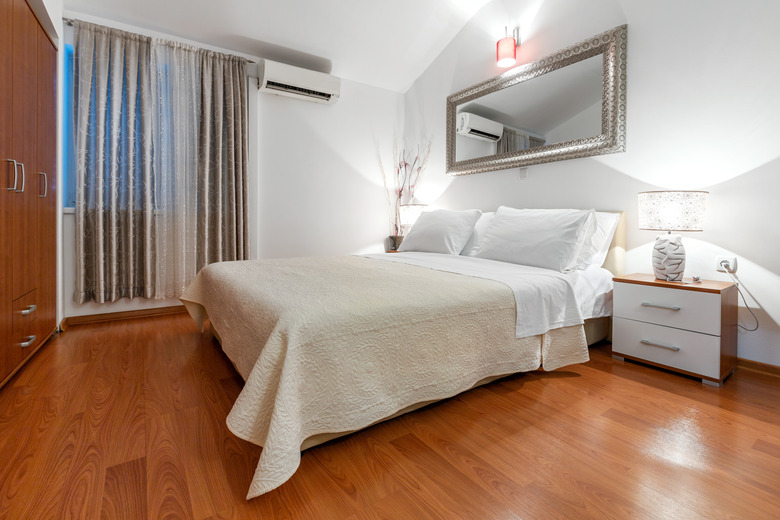How To Keep A Bed From Sliding On A Hardwood Floor
We may receive a commission on purchases made from links.
Do you feel like you're on a bad amusement park ride whenever you're in your bed? Hardwood floors and beds might make a beautiful visual combination, but they don't always make the best functional pair. With little friction between the bed legs and the hardwood floor, your bed can slip and slide with every little movement. Trying different methods to keep the bed from sliding can help you sleep better.
Reasons Your Bed Slides
Reasons Your Bed Slides
Unlike carpeted bedroom floors, which give your bed natural grip, hardwood floors are smooth and flat. This makes it easy for slippery bed legs or freely rolling casters to slide every time you get in and out of your bed or even when you shift while lying in bed. The situation is often worse if you have a lightweight bed, as heavier beds often have enough weight to better stay in place.
Stopping the bed from sliding is important for your safety. A bed that moves easily could cause you to lose your balance or fall while you're getting in or out of bed. It can also scratch up or gouge your hardwood floors.
Install Padding on the Legs
Install Padding on the Legs
You can get a variety of items to install on the bottom of your bed legs to reduce how easily they slide on the hardwood floors. Some options include:
- Bed risers: A set of bed risers elevates your bed slightly to give you more room underneath. They typically feature nonslip surfaces to prevent your bed from moving.
- Nonslip pads: You can also get nonslip furniture pads that stick to the bottom of the bed legs without adding any height. They come in a variety of shapes and sizes to fit your bed legs well, and they're made of soft rubber material to prevent scratches on your floors.
- Caster cups: If your bed has wheels, caster cups are designed with a groove for the wheel. With a caster cup placed under each wheel, the bed stays securely in place.
Add an Area Rug
Add an Area Rug
A simple option that also improves the aesthetics of the bedroom is adding an area rug for traction under the bed. For a queen-size or king-size bed, an 8 x 10-foot rug or a 9 x 12-foot rug is ideal. Choose a bedroom rug with a nonslip backing or add a rug pad to prevent the area rug from shifting along with the bed.
In the bedroom, rugs usually run perpendicular to the bed with the long side of the rug going the opposite way of the long side of the bed, so the rug is significantly wider than the bed. If the rug is large enough, place it so it goes underneath the nightstands. If not, position it so it's about one-quarter of the way down the bed from the headboard.
Move the Bed
Move the Bed
In some bedrooms, moving the bed position to a corner can help. With the bed pushed firmly into a corner, it has support on two sides to keep it from shifting. This option is best for a bed where only one person sleeps since it's a pain for two people to get in on one side of the bed. It also limits the furniture arrangement in the room and takes up a lot of wall space compared to centering the bed on a wall.
Attach the Bed to the Wall
Attach the Bed to the Wall
If you like your bed in the same spot all the time, anchoring it to the wall is an option. You'll need long screws that can go through the headboard and into the wall securely. Your wall needs to be structurally sound enough to hold the bed in place. However, once it's anchored, you can't easily move the bed, so make sure you're married to the placement.
